Latest proposal (subject to updates). Volume ≈ 5970 mm³. Aluminium density ≈ 2710 kg m⁻³ ⟹︎ weight ≈ 16.2 g.
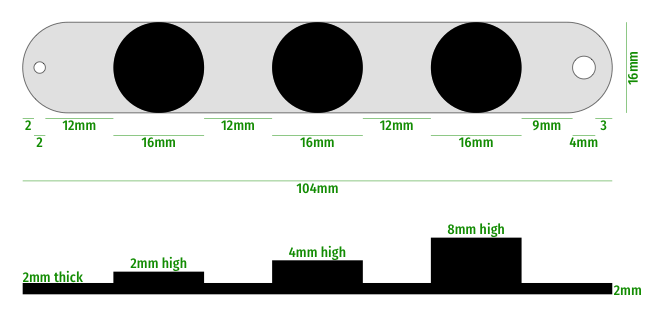
Potential purchasers:

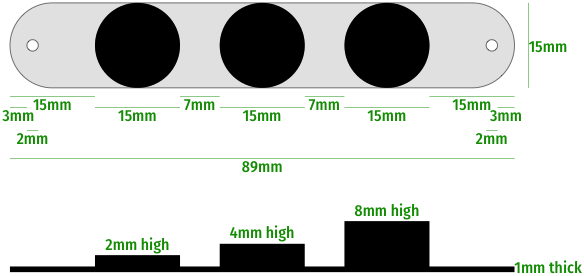
Good.
Almost hundreds. Let me count. OK. Nearer, err, two. Please measure some bottles.
Using the rigorous engineering of a wild speculative guess, err, I hope so. Seems about right. Would 2mm make you happier? Do you want that extra weight in your pocket?
Hard and unforgiving is the game here. User control requires no slack. If smaller than internal diameter, then that should be enough.
Is 155mm longer than needed? How do you control it such that the cork never goes too far?Alex Bridgeman wrote: ↑21:07 Sun 02 Jan 2022I often choose to push a cork into a bottle, so I can later bag it out and have a good chance to retrieving it intact and whole. Less often I just ease the cork down a few millimetres to make it easier to extract.
I use a cork pusher to do this. My cork pusher is made of brushed stainless steel. It has slightly rounded edges on the pushing end of the cylinder and a handle / stop at the other end to prevent the cylinder dropping into the bottle. It is 155mm long and 16mm diameter.
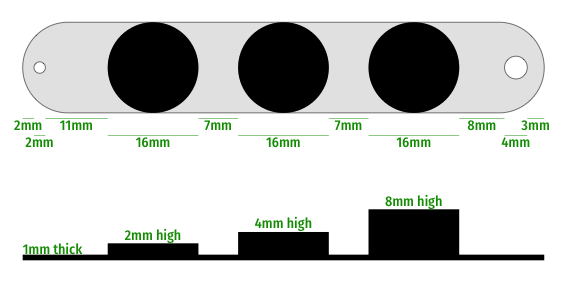
I would want to try 2mm before 4mm, particularly if the inner neck is not cylindrical. And 16mm would cause it to fall in. Note: we are not restricted to three pistons. I might impose an upper limit of five.
Strongly disagree. A corkscrew, because it applies its force to the centre, rips corks. On the edge, the force must be.
Or to hang on a nail.
One could have three heights of each of multiple diameters. Is that really necessary? Surely 16mm, or even 17mm, would fit 99% of use cases.
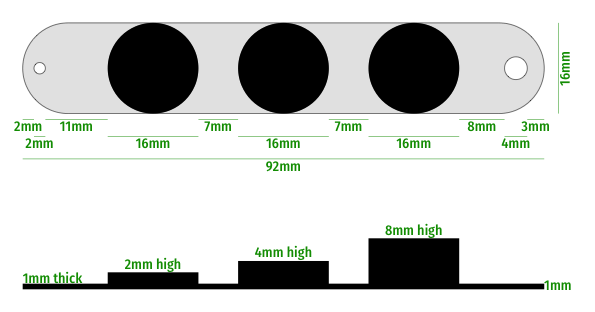
Low and flat improves control, so it can’t be a long piston. Also, instead of a “drill depth collar”, there could be a series of holes through which a second rod goes, the rod acting as the depth limiter.JacobH wrote: ↑23:32 Sun 02 Jan 2022Another way of doing this would be to add a drill depth collar to something like Alex's solution. That would allow you to set how much of the "piston" is exposed and therefore how deep into the bottle you are pushing the cork. 16mm ones seem readily available and I bet the tolerances would fit a 15mm piece of steel rod, too. They usually lock with a set screw which could easily be swapped out for a thumb screw.
I have a bottle opener which is a flat piece of metal with appropriate holes. It feels absolutely rigid, and is 2mm thick. Upgrading.
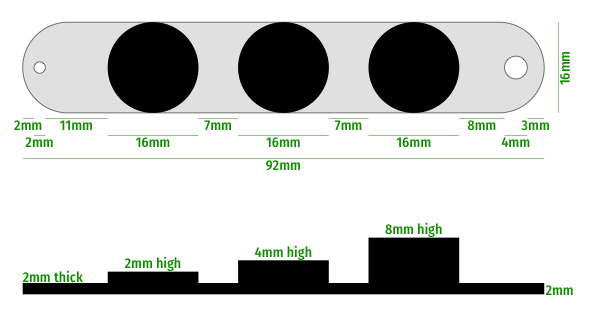
Remember I will frequently push a cork fully into a bottle. Often this requires quite a length of push since some old bottles have a double constriction around the cork. 155mm is a convenient length for my purposes.jdaw1 wrote: ↑22:11 Sun 02 Jan 2022Is 155mm longer than needed? How do you control it such that the cork never goes too far?Alex Bridgeman wrote: ↑21:07 Sun 02 Jan 2022I often choose to push a cork into a bottle, so I can later bag it out and have a good chance to retrieving it intact and whole. Less often I just ease the cork down a few millimetres to make it easier to extract.
I use a cork pusher to do this. My cork pusher is made of brushed stainless steel. It has slightly rounded edges on the pushing end of the cylinder and a handle / stop at the other end to prevent the cylinder dropping into the bottle. It is 155mm long and 16mm diameter.
Is 16mm the optimal diameter?
A possible improvement:DRT wrote: ↑09:48 Mon 03 Jan 2022 At roughly 3 a.m. this morning I awoke with an idea about this.
Is the device to be made from a single piece of milled stainless steel? If so, perhaps a combination of AHB's "rod" and JDAW's "bar" could be devised to save some space in the pocket. I am picturing a rod of stainless steel of 100/155mm in length and 15/16mm in diameter with one half of the length milled into a 2mm thick bar with two pistons opposite one another on each side of the bar, perhaps 4mm and 8mm in height, with a rounded end with a hole for a keyring or nail. The device could be used flat as intended by JDAW or as a plunger as currently used by AHB.
Alex Bridgeman wrote: ↑00:14 Mon 03 Jan 2022Remember I will frequently push a cork fully into a bottle.
I want to loosen a sticky cork, which can then be extracted with a corkscrew. Hence the varying depths. Push in 2mm. If it pings back, if the 2mm has been absorbed by the cork’s elasticity, then I’ll push 4mm. If the cork is very elastic, 8mm.PhilW wrote: ↑10:00 Mon 03 Jan 2022I will very occasionally push a cork perhaps 3-4mm into the bottle to free a stuck cork, but I only ever do it using a screwpull corkscrew, so that the worm is in the cork (preventing the cork from falling into the bottle were it minded to do so); winding the handle/worm until ~3mm short of fully wound then allows you to pressure on the worm, and the cork will only move the max of 3mm, enough to release a stuck cork (I've only ever had one stuck-yet-spongy cork which would flex but not push when trying this).
I only do the above if it the cork feels stuck to the side and that the centre would otherwise pull out. I (almost) never push the cork all the way in since the top of the cork can often be grubby and I would be concerned about potentially contaminating the wine, and would use tongs if possible instead in that scenario.
For a normal bottle, 4mm would just be enough. How thick is the wax? How much do you need?
Agree with Glenn; I would allow 20mm from the centre of the first piston to the edge of the next, thus accomodating total capsule width of max 40mm; this is likely excessive, but better safe than sorry; I certainly wouldn't want less than 30mm. assuming 10mm pistons, then that would mean 15mm flat section between (and at outside); with 2 pistons that would be 15/10/15/10/15 = 65mm total, with three 90mm total.
I think you should test that theory with an engineer. Your current design is a complex shape from a single piece of steel that would, I think, be expensive to manufacture. Five or 6 simple components that screw together might well be cheaper.
Your words suggest knowledge that I lack. Please say more about the “CNC machine”.
Made of aluminium.
Useful actual data. Assume a 16mm piston width. With 10mm separation between pistons, a 36mm wide neck could always be accommodated. I’ll update the design to make the spacing 12mm, so there is a mite spare.PhilW wrote: ↑11:11 Mon 03 Jan 2022Additional evidence-based justification for spacing >10mm between pistons: I use neck-tags on all bottles to aid in-rack identification. The previous neck tags I used had a 30mm dia hole, and I fairly often find on older bottles this is not enough to allow the tag to pass over the capsule unimpeded. I deliberately bought the latest tags with a wider hole; this is 36mm, and goes over almost all capsules; matching this would be a >=13mm spacing between 10mm pistons. Am assuming that piston depth at 8mm is potentially sufficient to otherwise foul the remaining capsule, and that you don't want to have to remove further capsule from neck (which would facilitate closer spacing).
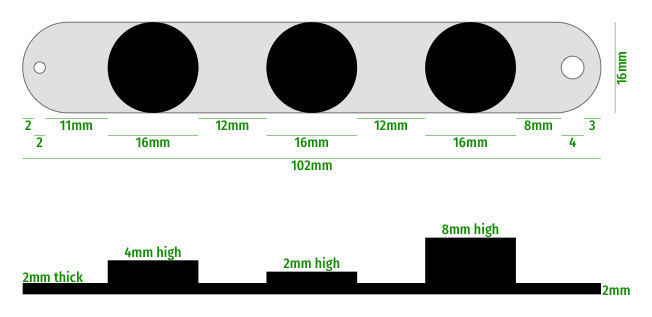
I think Derek is thinking of a computer-numerical controled mill which would, I think, be the only way of producing this from a single piece of metal. Essentially a computer controls a tool which removes material from a block of metal until the design is left. It is usually used for producing quite complex pieces that can’t easily be made by traditional machining: https://www.youtube.com/watch?v=osqX7iQEnuI.
Correct.JacobH wrote: ↑12:36 Mon 03 Jan 2022I think Derek is thinking of a computer-numerical controled mill which would, I think, be the only way of producing this from a single piece of metal. Essentially a computer controls a tool which removes material from a block of metal until the design is left. It is usually used for producing quite complex pieces that can’t easily be made by traditional machining: https://www.youtube.com/watch?v=osqX7iQEnuI.
If you know anyone this this sort of kit (and they know how to use it) then I’m pretty sure they’ll be able to come up with a manufacturing solution.nac wrote: ↑15:16 Mon 03 Jan 2022 Having it milled or CNCed from a single piece of metal would be prohibitively expensive, even if you were producing in bulk.
An alternative might be to obtain (not sure where from) a solid tubular piece of steel(?) of the correct diameter and then cut this into slices (not sure how) of various required thicknesses and then either screw or weld these onto a piece of steel(?).
I think as a starter you need to find someone with a metal working lathe and metal cutting facilities.
That would do the job. How is it programmed? What instructions would I need to prepare?
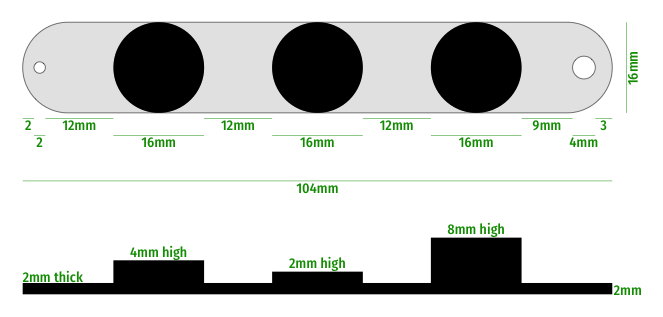
https://get-it-made.co.uk/quote/
Thought I'd chime in here as I often get lots of things like this made. It ain't gonna be cheap - I'd suspect around £100 per unit for a small run.
This would be incredibly difficult to mill. Would need at least a 3 axis CNC, probably 5 axis.PhilW wrote: ↑16:59 Mon 03 Jan 2022 Per current diagram, width of tool is same as piston dia at 16mm - all good, and means tool would also fit inserted in bottle lengthways, so could be used per Alex for full push-in; if one end were widened slightly instead of just rounded off at same width, that would also stop tool being able to fall into bottle if used for this purpose also.